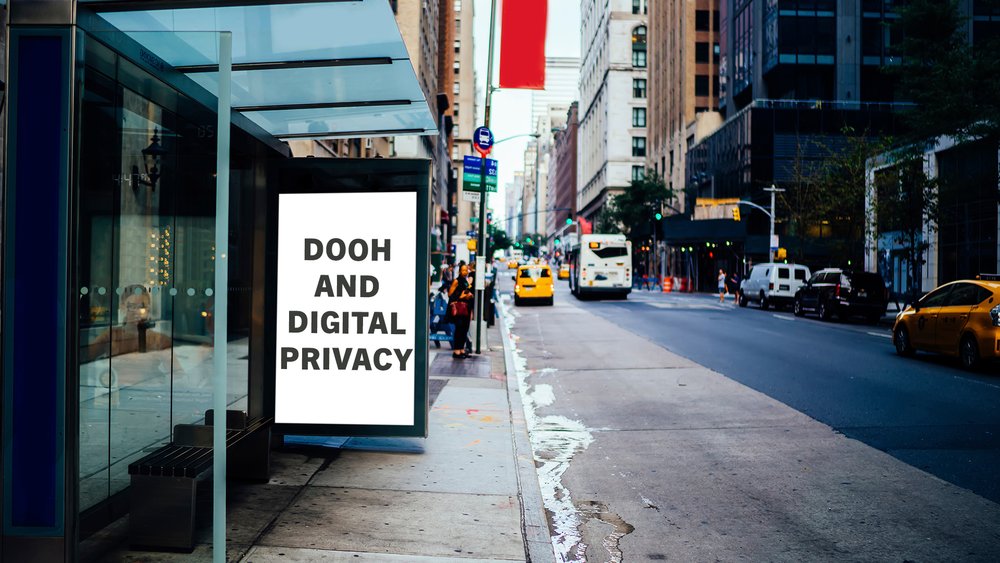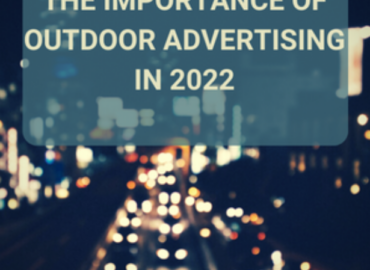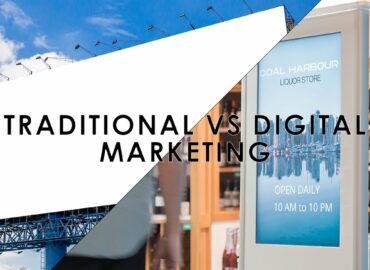DOOH and Digital Privacy
2022 is a year digital marketers and advertisers have mixed feelings about Google phasing out third-party cookies. While this move may seem out of the blue for some, strategically ceasing the use of these cookies has been a long time in the making. With the rise of users requesting more privacy when using technology, larger tech companies, like Google and Apple have been decreasing the amount of user data third party websites and application developers have access to. The ad tech sector was ripped apart by Apple’s iOS 14.5 privacy rules, which require applications to obtain express agreement to follow user activity. Apple’s App Tracking Transparency (ATT) policy, in combination with the development of data privacy legislation and Google’s anticipated deletion of third-party cookies (albeit not until 2023) has caused marketers that rely on one-to-one targeting to reconsider their data strategies. Numerous have speculated that in an era focused on consumer permission, adtech – and the many firms that rely on one-to-one targeting via cookies or mobile advertising IDs for user acquisition and engagement – will implode.
However, anybody interested in determining the impact of data privacy reforms on advertising must first determine which advertising channels are in question. ATT and similar regulations will not have an influence on social advertising in the same way that they would on television, nor will they have an impact on search in the same way that they will on display. Consumers engage with information in different ways depending on the context, which results in diverse forms of data being generated to explain their behaviours.
This is especially true when it comes to the impact of privacy regulations on digital out-of-home (DOOH) advertising. DOOH does not work on a one-to-one basis. Rather, the channel uses representative data to programmatically place ads where they will reach the desired population of an advertiser. As a result, DOOH will evolve differently in the privacy era than kinds of digital advertising that are heavily reliant on one-to-one targeting.
Without delving too deep into the details, let’s look at why data privacy regulations are good for advertising, how they affect DOOH particularly, and what modifications DOOH marketers will need to do to react to the effect of ATT and other privacy laws.
Changes in data privacy are beneficial to both society and business.
At their foundation, data privacy changes, whether implemented by state governments or internet corporations, are about being upfront with customers about how, when, and why their personal information is gathered, as well as obtaining consumer consent to collect it.
That’s a common-sense upgrade in an advertising environment that’s been a little hazy about why and how it gathers data in the past. The advertising sector owes customers the ability to choose whether or not they want a corporation to gather their personal data depending on the advantages and circumstances of data acquisition. Advertisers should make it obvious to customers that data collecting frequently funds free services, can be safe if done right, and improves the convenience and engagement of digital interactions.
I’d want to point out that data privacy reforms aren’t just for the benefit of society. They’re also beneficial for business for a reason that all advertisers understand: people don’t like commercials that they think are ‘creepy,’ and they don’t like firms that monitor them without their consent. Consumers, on the other hand, dislike information that is deemed irrelevant. Adtech and businesses can create closer relationships with the people they’re seeking to target by creating and providing relevant information in a responsible manner in a more transparent and consent-first advertising environment.
What impact do privacy laws have on DOOH?
Because it depends on probabilistic models based on sample data rather than constant surveillance of individual users’ activity, DOOH is ideally positioned to succeed in the post-ATT world of data privacy. Because DOOH is a one-to-many advertising channel, businesses may reach their target audiences without having to target them individually.
DOOH, on the other hand, uses anonymized location data to analyze aggregated consumer movement patterns and to assist marketers in determining where, when, and how to contact their target audiences. It’s fair to predict that the ATT and other privacy reforms will restrict location data scalability and force DOOH marketers to adjust their targeting and measuring strategies.
Advertisers and providers of DOOH should consider the following suggestions.
As we go into the data protection age, the most important piece of advice for companies and DOOH providers is to be vigilant. To begin, advertisers should collaborate with their service providers to ensure that consent for data collection is obtained throughout the data management process. This will guarantee that all companies engaged in data collecting and management honor consumer permission and adhere to changing requirements.
Advertisers should also collaborate with suppliers to understand any changes to established procedures, such as audience methodology and feasibility criteria, to ensure that the data sets used to describe consumer behaviour remain representative. Alternative targeting options, such as contextual targeting, may be considered by advertisers to connect with customers in a privacy-friendly manner.
Brands should continue to invest in generating their own unique data sets in-house and engage with providers who have a strong enough underlying technology infrastructure to handle any data set you to bring to the table.
Some believe data privacy reforms will enhance the advertising industry, particularly DOOH. ATT and its ilk do not signal the end of data-driven marketing or business. Rather, they provide a chance for marketers and ad tech firms to strike a healthy balance by clearly expressing a value proposition for consumers when asking for their data.
Advertisers gain audiences that want to hear from them, and consumers receive consent. Everyone benefits if we do things correctly.
Additional resources:
https://broadsign.com/blog/digital-out-of-home-and-privacy/
https://www.onescreen.ai/blog/how-will-digital-ooh-and-data-privacy-shape-the-advertising-landscape
https://www.nytimes.com/2021/09/16/technology/digital-privacy.html
https://ineosolutionsinc.com/industry-resources/the-greatness-of-dooh
https://ineosolutionsinc.com/industry-resources/end-of-online-advertising




